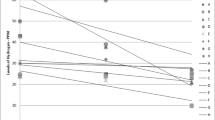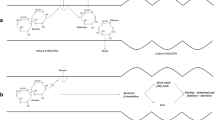Summary
The hydrogen breath analysis test was performed in healthy Thai adults to determine lactitol tolerance. The study was conducted in 39 individuals (11 males and 28 females) aged 18–41 years. All volunteers agreed to participate in this study after the risks and benefits had been fully explained. Subjects were requested not to consume milk, milk products, or high-vegetable diets for a day and to fast from 10 p.m. of the day preceding the test day. After consumption on the test diet (12 and 20 g of lactose or lactitol, respectively, in 250 mL water), the subjects recorded the severity of symptoms for 24 hours. Breath samples were collected after fasting and after consumption of the test diet at 30 min intervals over the 7-hour study period. Breath samples were analyzed for hydrogen using gag chromatography. After consumption of 12 g lactose, the prevalence of lactose malabsorbers was established. The increment of a peak breath hydrogen level of ≥ 20 ppm above the baseline level was used as an indicator of lactose malabsorption. The lactose malabsorbers were further classified as lactose tolerants or lactose intolerants according to the gastrointestinal symptoms observed. All 39 healthy Thai adults could be classified into 3 groups as follows: 9 (23%) lactose absorbers (LA), 15 (38.5%) lactose malabsorber/tolerants (LMT) and 15 (38.5%) lactose malabsorber/intolerants (LMI). Using the hydrogen breath test, 67% of the subjects were identified as lactitol intolerants after the consumption of 12 g lactitol. The lactitol intolerants comprised 53.8% of LMI, 34.6% of LMT, and 11.5% of LA. Among all subjects, one third of LA (33%), two thirds of LMT (60%), and 93% of LMI were lactitol intolerant. In addition, gastrointestinal symptoms such as flatulence and abdominal pain were most pronounced in LMI. Diarrhea was also a prominent manifestation after consumption of 12 g lactitol. Therefore, it was finally decided that 20 g lactose or lactitol were not given to LMI because of the risk of gastrointestinal symptoms. After high doses (20 g) of lactose and lactitol consumption, most LMT developed more symptoms than did LA and the main symptom was diarrhea. Consumption of 20 g lactose resulted in fewer symptoms than 20 g lactitol in both LA and LMT. On the basis of the hydrogen breath test, most LA tolerated 12 g lactitol without gastrointestinal symptoms except some flatulence whereas most LMT and LMI did not. Twenty g lactitol was not tolerated by both LA and LMT because there was diarrhea among the subjects, especially in LMT. Although the hydrogen breath analysis test is the best method for identification of lactose malabsorption, it is not the best method to identify lactitol intolerance. A hydrogen concentration of 15 ppm above the baseline level was found to be the best cut-off point to indicate lactitol intolerance although sensitivity was 85% and specificity only 38% in this study. It was further concluded that there is a greater susceptibility to lactitol in human lactose malabsorbers than in lactose absorbers. Our findings might be relevant for the limited use of lactitol in Thailand.
Similar content being viewed by others
Author information
Authors and Affiliations
Additional information
Received: 11 September 1998, Accepted: 8 September 1999
Rights and permissions
About this article
Cite this article
Soontornchai, S., Sirichakwal, P., Puwastien, P. et al. Lactitol tolerance in healthy Thai adults. Eur J Nutr 38, 218–226 (1999). https://doi.org/10.1007/s003940050064
Issue Date:
DOI: https://doi.org/10.1007/s003940050064




